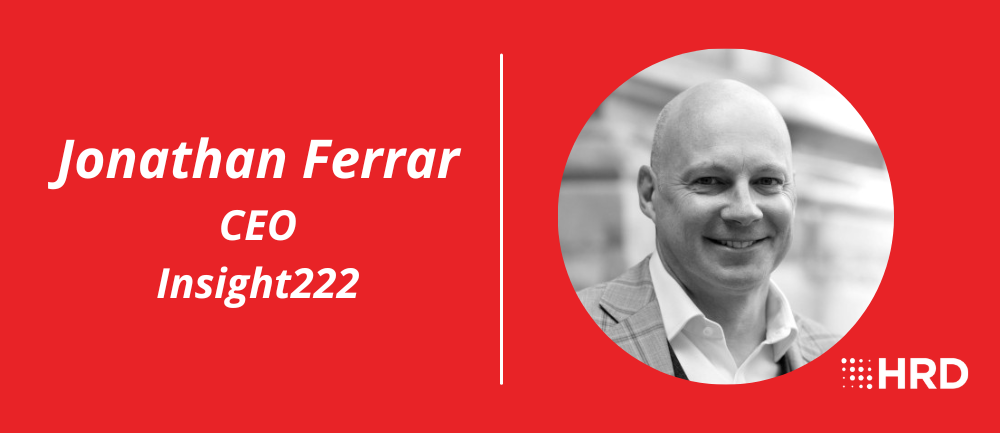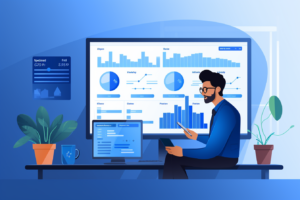Insight222: Measuring and enhancing the value of your people analytics function
- 8 Min Read
In 2022, people analytics continued to grow in influence and significance. As we enter 2023, it’s time for HR leaders to ask themselves some honest questions. How would you rank the quality of your people analytics function? What impact does it have on your organization? Whatever your answer, there are still steps you should take […]
- Author: Kate McKenzie
- Date published: Jan 19, 2023
- Categories

In 2022, people analytics continued to grow in influence and significance. As we enter 2023, it’s time for HR leaders to ask themselves some honest questions. How would you rank the quality of your people analytics function? What impact does it have on your organization? Whatever your answer, there are still steps you should take to increase the value analytics can squeeze from your workforce.
Insight222’s People Analytics Trends 2022 report ratifies the power of people analytics and examines how people analytics champions can extend their influence in 2023 and beyond. In this exclusive HRD Q&A, Jonathan Ferrar, CEO of Insights222, reveals the key findings from the report and discusses the business challenges people analytics can solve.
1) What are your main takeaways from the report? Did any of the findings surprise you? What does it all mean?
There are three key takeaways from this report. One, the discipline has grown in importance. Two, People Analytics leaders are expanding their range of influence. And three, we have identified that Leading Companies in People Analytics (“Leading Companies”) display seven key characteristics which enable them to deliver more value to their organizations.
Given all the challenges of recent years such as the global COVID-19 pandemic, hybrid working, racial inequality, high inflation, and the cost-of-living crisis, it is no surprise that C-suite executives have important people topics to address. These topics require more insights than ever before on people issues. Therefore, we are seeing organizations investing in it more and more. And we find that C-suite executives see the value of it.
Since many organizations are facing these people challenges, people analytics, in organizations and companies across the world, has become an important source of operational expertise and competitive advantage.
2) The report identifies teams ranked from “A” to “D” – can you share more about what makes an “A” team? And what signals might tell you that your team is a “D” team?
The extensive quantitative data from the 184 companies that participated in our survey allowed us to create this model. We assessed multiple variables in the data and looked at various factors and characteristics of people analytics teams. What we found was that the investments made in, and the financial value derived from, people analytics allowed us to identify four types of teams.
Analytics “A” teams consistently deliver valuable insights to the business, which are produced and scaled. They also invest heavily in people analytics cumulatively to drive business decisions. We see Leading Companies operating at the top of the “A” Team. The signals that a team is an “A” team include that they focus on key business topics, they have multiple strong business relationships at or near the C-suite level, they measure financial value and productize solutions across the enterprise to make people operations better, and allow employees and managers to have more inclusive workplace experiences.
However, “D” teams are at the lower end of each axis. They are typically under-invested in both skills and technology and are infrequently, or not at all, measuring the financial value from their people analytics activities. The signals for a “D” team are a lack of both quantity and quality of business stakeholder relationships, small teams relative to the size of the organization, limited focus on advanced analytics to key business topics, no financial measurement of outcomes and often changing priorities.
3) How has the influence of people analytics leaders changed?
Our research indicates that people analytics is regularly operating at the top of organizations. According to our study, the percentage of people analytics leaders who report directly to the chief human resources officer (“CHRO”) is 21% in 2022 which is eight points higher than in our research findings in 2021. This shows a higher level of accountability and influence.
We also see that as the tenure of the function itself increases, the likelihood of reporting to the CHRO or HR leadership team (“HRLT”) itself increases. In 100% of companies with a people analytics function that has been established for at least 10 years, the people analytics leader reports directly to the CHRO or HRLT. This is 88% for teams that have been established for 5-9 years and 83% for teams that have been around for 4 or fewer years. The key insight from this is that long-tenure functions have proven their value and the CHRO wants that function to influence more broadly. They want the leader close to them to provide insights and help the people agenda at the top table.
Many of these top leaders, especially in Leading Companies, are now personally interacting directly with C-suite members on a weekly, monthly, or quarterly basis. As such, people analytics, as a function, assists more directly on complex, business-critical topics, more quickly, when the leader is in direct conversation with those senior stakeholders.
4) How are the most impactful people analytics leaders expanding their influence in their organizations? What relationships should leaders be aiming to strengthen?
We find that those companies that deliver the most value from people analytics are also the companies where the leaders have the greatest depth and breadth of stakeholders. The leaders of the people analytics function in these Leading Companies continuously invest in meaningful relationships with many senior stakeholders, including the chief executive officer and chief financial officer. These relationships allow for clarity of purpose and priorities, and the ability to scale their solutions across the enterprise to deliver impact to employees and managers.
Additionally, we find that the “best” people analytics leaders are also investing in, what is termed, people analytics consultants. These people focus on interacting with senior business and HR leaders, clarifying priorities, and translating requests to data scientists. They also are superb at translating scientific solutions from data scientists back to stakeholders using storytelling so that they can inspire action.
Overall, the leaders and their consultants should create stakeholder relationships with a broad set of business executives. They should not just spend their time pandering to the day-to-day needs of senior HR leaders, responding to ad-hoc data requests. It has more influence when more time is spent with the C-suite on data-driven topics, to the point that the people analytics executive ultimately should be able to represent the CHRO in discussions with other C-suite colleagues without the CHRO even being present.
5) What do you predict will be the top business challenge workforce analytics should focus on for 2023?
Let’s put some context to this question. Over the last three years, strategic business topics have become defined by global people events. In 2020 and 2021, The twin crises of the global COVID-19 pandemic and racial inequality permanently changed employee expectations of work. Differentiators in attracting and retaining talent now include flexible working, employer commitments to mental well-being, and employees’ experience of diversity, equity, inclusion, and belonging (DEIB) in the workplace.
More than 80% of CEOs, as outlined in a 2022 Deloitte CEO study, expect inflation to influence or disrupt their business strategy within the next year, while concerns over the availability of key skills and disruption to supply chains prevail.
Our research supports the focus on these global societal and economic challenges. Leaders cite “diversity and inclusion” and “employee experience/listening” as the top two areas where it added the most value to their company in 2022.
I believe that it will continue to focus on major people topics that have profound individual, organizational, and societal impacts. I would imagine that in 2023 and over the next few years DEIB and mental well-being will be significant topics of focus, given the changes that have happened in the world over the last three years.
6) After the insights of this report, what would you advise to someone just starting to build the people analytics capability in their organization?
Whatever the starting point of the people analytics team, there are always opportunities to create more business impact and deliver more value as the company evolves. I would encourage teams to talk to senior business leaders to understand their key priorities.
That will allow practitioners to be able to focus their efforts on topics that have an impact. In short – listen, focus, and deliver value on a few key topics. That way employees and managers will benefit from the value that people analytics can deliver. And the company will get value too. It’s a win-win-win situation!
____
Jonathan is a globally recognized business advisor, speaker, and author in HR strategy and people analytics. He is the Chief Executive Office of Insight222, a global people analytics services, and solutions firm, headquartered in the UK, which he co-founded in 2017 after a career in corporate business.
Jonathan has extensive executive leadership and board advisory experience with companies like Andersen Consulting (now Accenture) and IBM.
He is a co-author of Excellence in People Analytics (Kogan Page, July 2021) and The Power of People (Pearson, May 2017). He is also a vice chair of the board of the Chartered Institute of Personnel and Development.








